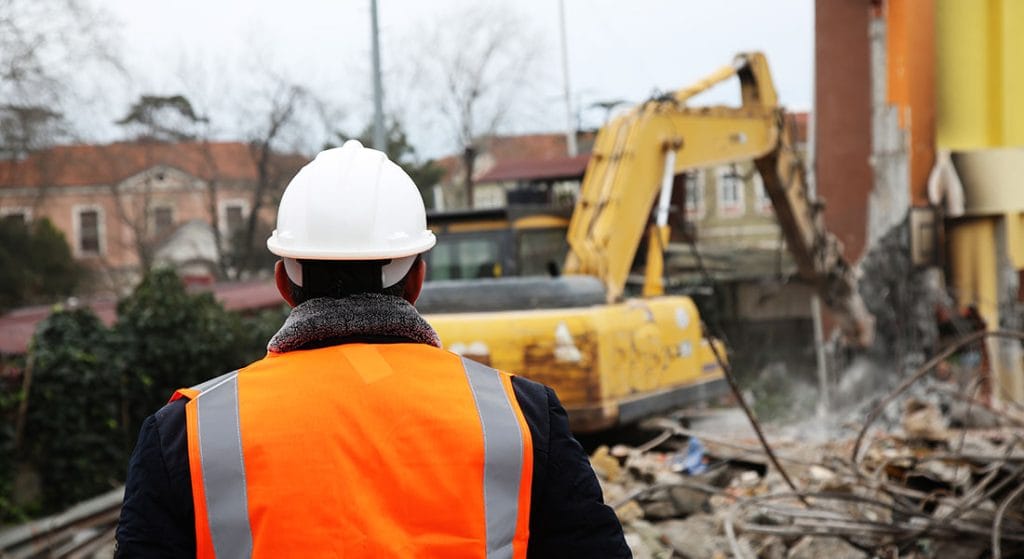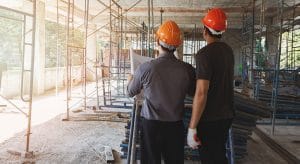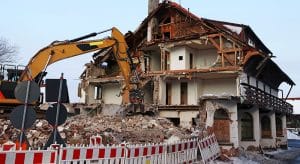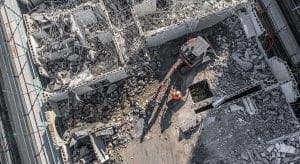For decades, demolition was seen as a brute-force trade — loud machinery, heavy dust, and plenty of debris. But times have changed. Today’s demolition sites are smart, efficient, and cleaner than ever, thanks to rapid advances in technology.
At Spotless Demolition & Rubbish Removal, we’ve embraced innovation to deliver faster, safer, and more sustainable demolitions across Brisbane and the Gold Coast. From precision robotics to dust-control systems and 3D site planning, here’s how technology is transforming the demolition landscape.
1. Precision and Safety Through Robotics
Remote-Controlled Equipment
One of the most remarkable advancements in modern demolition is the introduction of robotic and remote-controlled machinery. These compact machines, often controlled from a distance using wireless technology, can access tight or hazardous spaces without putting workers at risk.
Remote-controlled excavators, for example, can tear down concrete or brick structures inside confined buildings — such as during an office strip-out or shop defit — while operators remain safely outside the dust zone.
Improved Accuracy
Robotics also enables precision that was once impossible. These machines are equipped with sensors and cameras, allowing real-time monitoring of pressure, angle, and depth. That means fewer mistakes, less vibration damage to neighbouring structures, and a cleaner, neater finish.
2. 3D Modelling and Digital Planning
Pre-Demolition Visualisation
Before the first wall comes down, professional contractors now rely on 3D scanning and digital modelling to map every element of a structure. These models reveal load-bearing walls, wiring, and plumbing, helping to plan an exact sequence of demolition tasks.
At Spotless Demolition, our team uses advanced planning tools to identify structural vulnerabilities before work begins. This approach prevents costly errors and ensures compliance with building codes for residential and commercial demolitions.
Simulating Safety
3D modelling also allows us to simulate collapse patterns and debris spread. By predicting how a building will react to each removal phase, we can plan safer demolition paths and minimise disruption to nearby properties.
3. Smart Dust and Noise Management Systems
Cleaner Air, Healthier Sites
Technology is also improving air quality and visibility on demolition sites. Our modern dust management systems use negative air machines, HEPA filters, and misting units to trap airborne particles at the source.
These systems automatically adjust airflow and pressure levels in real-time, maintaining a clean, breathable environment. It’s especially important in confined or indoor projects like tile removal or internal strip-outs.
Noise Monitoring Technology
Noise sensors now measure decibel levels throughout a project, allowing contractors to control machinery use in compliance with local council noise limits — protecting both workers and the community.
4. Data-Driven Project Management
Smart Sensors and IoT (Internet of Things)
The rise of smart sensors has made real-time monitoring possible. Machines equipped with IoT sensors can now track fuel efficiency, vibration, pressure, and stress levels during demolition.
This data helps site managers predict equipment wear, schedule maintenance, and detect potential safety risks early — saving time, money, and reducing breakdowns.
Digital Site Logs
Instead of relying on manual checklists, digital platforms record every stage of the demolition process, from initial inspection to rubbish removal. These systems improve accountability, streamline compliance reporting, and make project management more transparent for clients.
5. Environmentally Responsible Waste Handling
Automated Sorting and Recycling
Demolition used to mean filling skips and sending debris straight to landfill. Now, advanced waste-sorting technology allows recyclables like concrete, timber, and metals to be separated automatically on-site.
At Spotless Demolition, we integrate waste-handling systems and partner with recycling facilities to minimise environmental impact. Our rubbish and waste removal services ensure every project is left spotless — in both appearance and environmental footprint.
Material Tracking Software
Some demolition firms now use tracking software to document how much waste is recycled versus disposed of. This not only supports sustainability goals but also helps clients meet green-building certification requirements.
6. Advanced Cutting and Concrete Technology
Diamond-Tipped Cutting Tools
Modern demolition relies on precision cutting tools for controlled removal of concrete, walls, and tiles. These tools feature diamond-tipped blades that can slice through dense materials with minimal vibration and dust.
Whether it’s an internal wall removal or floor preparation before renovation, these advanced saws ensure cleaner cuts and reduce the need for secondary finishing work.
Hydraulic and Electric Systems
Electric demolition hammers and hydraulic crushers now outperform older pneumatic models, delivering stronger impact with reduced noise and energy consumption — a perfect fit for residential or commercial environments where noise control matters.
7. Asbestos Detection and Removal Technology
Handling asbestos requires strict safety and compliance. Innovations in asbestos detection and removal equipment are reducing risk for both workers and occupants.
Detection and Monitoring
Modern sensors can detect microscopic asbestos fibres in the air, alerting teams to unsafe exposure levels. Combined with digital tracking, it helps manage containment zones and ensures compliance with Australian safety standards.
Specialised Removal Equipment
Our certified asbestos removal experts use negative pressure units, sealed enclosures, and HEPA-filtered vacuums to contain and safely remove hazardous materials. These systems are continuously monitored via real-time data for added assurance.
8. Drones for Inspection and Monitoring
Bird’s-Eye View of Safety
Drones are revolutionising pre-demolition surveys and progress tracking. High-resolution aerial imaging allows our team to inspect rooftops, chimneys, and hard-to-reach areas safely — without the need for scaffolding.
Progress Tracking and Documentation
Drones can also capture time-lapse videos of a project’s progress, providing both clients and project managers with an accurate record of each phase. This technology reduces human error and provides clear visual evidence for compliance reporting.
9. Virtual Reality (VR) and Training Simulations
Enhanced Worker Training
Virtual Reality is emerging as a powerful tool for demolition worker training. VR headsets simulate real-world demolition environments, helping new operators learn how to control machinery, identify hazards, and manage emergency situations safely — without risk.
Improved Planning Collaboration
VR technology also allows clients, engineers, and demolition teams to walk through a digital model of the site before work begins, ensuring everyone understands the process and expectations.
10. Sustainable Machinery and Electric Equipment
Eco-Friendly Power Solutions
Sustainability is driving innovation in demolition machinery. Many modern excavators and loaders now run on electric or hybrid engines, reducing emissions and fuel costs while delivering comparable power.
Spotless Demolition is committed to using energy-efficient equipment that aligns with environmental goals and minimises the carbon footprint of every demolition project.
Hydraulic Oil Recycling and Reuse
Some new machines feature hydraulic oil filtration systems that recycle and reuse oil on-site, reducing waste and improving machine longevity.
11. Enhanced Communication and Coordination Tools
Mobile Apps and Cloud Platforms
Gone are the days of paper plans and radio chatter. Today, cloud-based project management apps keep everyone — from field workers to clients — updated in real time.
These tools enhance communication across teams handling strip-outs, rubbish removal, and internal demolitions, ensuring consistent documentation and faster decision-making.
12. The Future of Demolition Technology
The demolition industry is only scratching the surface of technological potential. As artificial intelligence and machine learning evolve, expect to see:
- AI-assisted site planning that predicts risks and suggests optimal demolition sequences.
- Autonomous machinery capable of performing repetitive tasks without direct human control.
- Real-time data analytics for safety monitoring and equipment performance optimisation.
At Spotless Demolition, we’re ready to adapt to this exciting future — combining our 30+ years of experience with a commitment to innovation and sustainability.
Technology has revolutionised the demolition industry, transforming it from a brute-force process into a science of precision, safety, and sustainability. From robotics to dust-control systems and digital project management, modern demolition is smarter and cleaner than ever before.
Whether you need a full building demolition, an internal strip-out, or safe asbestos removal, Spotless Demolition & Rubbish Removal combines cutting-edge tools with expert craftsmanship to deliver superior results — every time.
Contact us today to book a free inspection or learn more about how our innovative demolition methods can make your next project faster, cleaner, and safer.
Get a Free Quote





